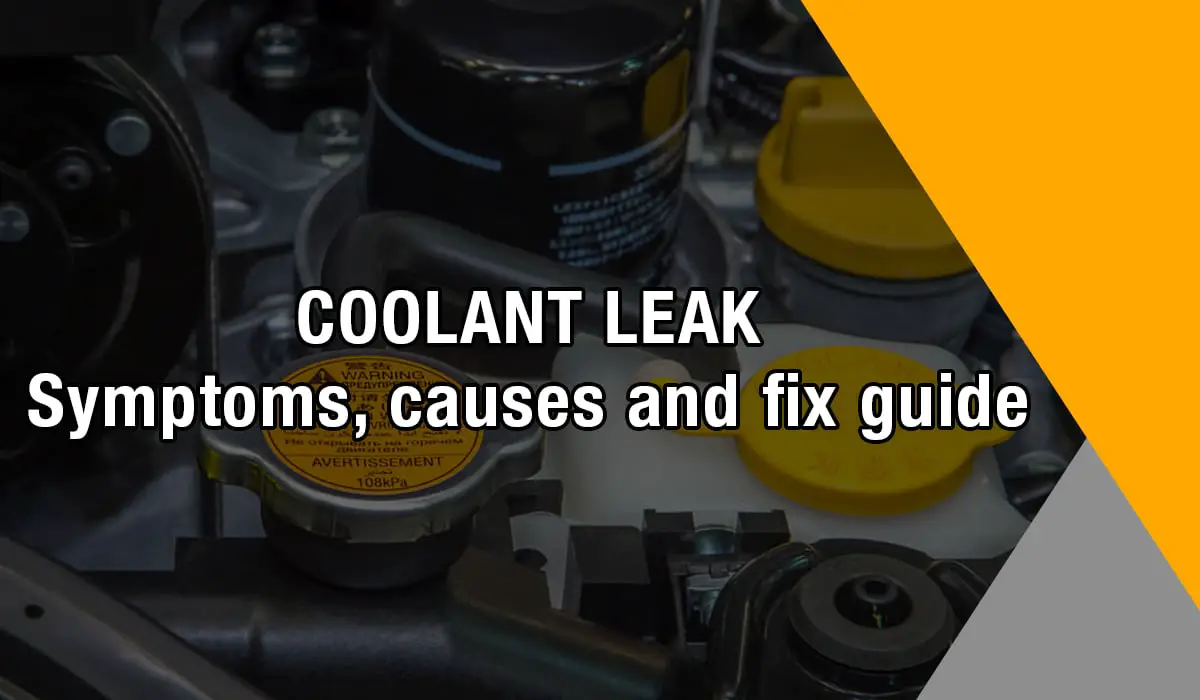

This will be the most costly option, but you’ll save time (compared to fixing it yourself) and you’ll know the repair will last a long time.Coolant leaks can occur anywhere in the cooling system or even inside the engine itself. If after reading our tips, you've put yourself off attempting to fix your car radiator leak yourself, you can always enlist your local garage to address the problem. You can buy E poxy from any garage or car parts shop.Įnsure the area is clean and dry before application and leave overnight to set.
#EASY COOLANT LEAK FIX PROFESSIONAL#
This is added directly into the cooling system, topped off with a coolant/water mixture.įixing the problem with sealant is unlikely to be as effective or long-lasting as a professional radiator repair or Epoxy.Įpoxy is more effective for a car radiator repair than leak sealant. Locate the sound of leaking air to find the fracture.įor a quick fix car radiator repair you can buy a commercial leak sealant to repair any crack, which must be applied when the engine is cool. Use the tester to pump pressure into the coolant system. Remove your radiator cap and fit the pressure tester to the hole. These are available from car parts stores and garages. To u ndertake your coolant leak repair, you may decide to use a coolant system pressure tester to find leaks. Turn over the engine and inspect the car radiator for leaking fluid or steam. Use a hose to spray off any grease and grime. It will be much easier to identify a leak if your radiator is clean. As such, it is important to wear safety glasses.Īs an additional safety measure, you may wish to wear gloves. As such, you must wait several hours for the engine and radiator to cool down before attempting to locate the leak.Įven after the engine has cooled, the system could remain under pressure and expel gas when the radiator cap is opened. When hot, your radiator system is highly pressurised.
#EASY COOLANT LEAK FIX HOW TO#
If you want to tackle the job yourself, follow the safety advice below as to how to undertake a car radiator leak repa ir :Īllow the engine to cool before inspections begin The simplest way to remedy a suspected car radiator leak is to take your car to your local garage to undertake the required car radiator repairs. Rust can appear in many parts of your car, but a concentrated zone of rust around your radiator suggests a leak. If you spot rust or discolouration around the radiator, there could be a leak in that area. If the fluid level is lower on the second inspection, you do have a coolant lea k and will require a coolant leak repair. If you initially check the coolant level when the engine is cool, be sure it is cool when you re-check (as the fluid can expand when hot). If you think your vehicle is leaking, make a note of the fluid level in your coolant reservoir - you can do this with a pen or take a photo.Ĭheck back after a while driving and see if the coolant level has reduced. How to check the coolant reservoir for a leak The main reason for radiator failure is a coolant leak, which can lead to the cooling system failing. Models with air-conditioning systems may also leak water from condensation - but this, of course, is easy to distinguish from coolant or oil. Oil, by contrast, is either yellowish if it's new, or brown/black if it has been in the system for a while. How to tell if it's coolant on the ground beneath my car or oilĬoolant is a sticky fluid, often of green or orange colouration.

#EASY COOLANT LEAK FIX PATCH#
It's important to carry out regular checks on your radiator to spot any leaks as soon as they occur.Ī classic tell-tale sign of a car radiator leaking is a patch of coolant fluid appearing on the ground under your car after it has been parked up - if it's petrol on the ground, you might have a fuel leak. The radiator system dissipates this heat, but if the coolant contained within starts to leak, the engine may overheat. Most of this escapes through the exhaust system, but a good deal lingers around the engine itself. If left for a long time, the resulting engine damage from a car radiator leak could cost you a lot more money, or even - in a worst-case scenario - write off your vehicle.Ĭar engines generate a huge amount of heat.

But this can have dangerous consequences. With costs this high it may be tempting to ignore the leak while the car is still functioning. Labour costs for car radiator repairs involve a mechanic checking for leaks, removing the radiator, a whole system flush and the installation of a new radiator. However, if you think that your car radiator may have a leak, it is best – and usually much cheaper – to deal with any issues as soon as possible. Breakdown cover from Start Rescue can help you in such situations. If you suffer a car radiator leak, your engine could overheat. Your car's radiator is essential for the ongoing cooling of your engine.


 0 kommentar(er)
0 kommentar(er)
